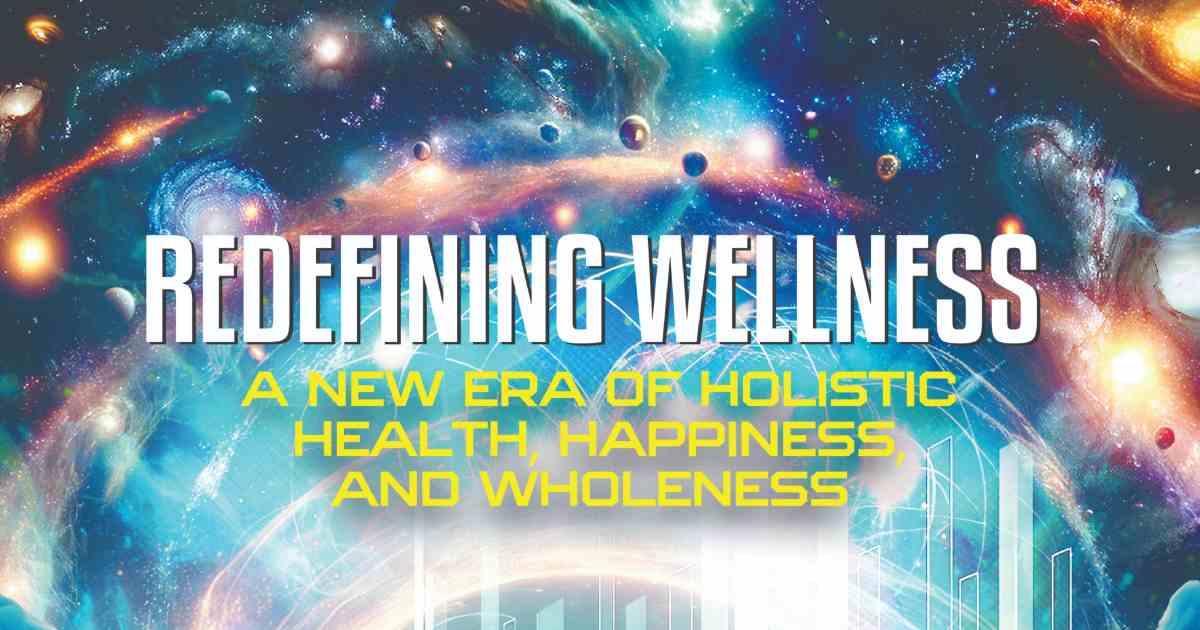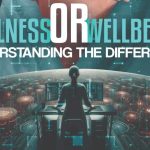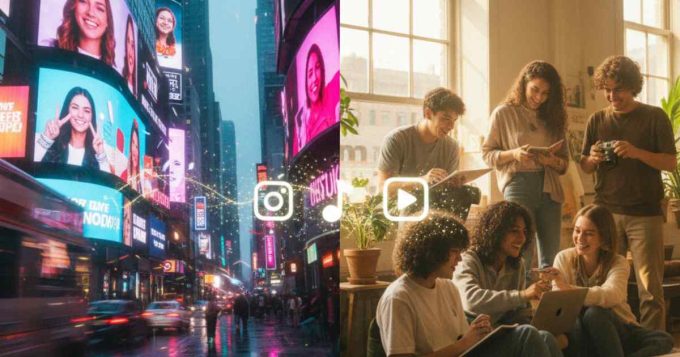Wellness isn’t just a passing trend—it’s a way of life that’s stood the test of time, evolving with history and innovation. Let’s explore the many layers of wellness, how it shapes the choices we make, and the creative ways brands are making it part of our everyday lives.
Let’s unearth the world of wellness together as we explore its rich history, the various dimensions that make up this holistic approach to health, and how it’s being incorporated into marketing strategies. We’ll also examine how consumers respond to wellness initiatives and what they expect from the industry today. Join us on this journey as we uncover the past, present, and future of the wellness industry – and discover how it can empower you to achieve your highest potential for wellbeing.
Roll out your mat and rise to wellness; spark a path onto this transformative journey with us!
Wellbeing is more than just the absence of illness – It’s a hamonious integration of physical, mental, emotional, and social factors that come together to create a life of fulfilment and purpose. It’s the spark that ignites happiness and life satisfaction, making every day feel more meaningful and vitality.
Why does wellbeing matter? The answer is simple yet challenging to implement. When we prioritise our wellbeing: We add years to our life, giving us more time to love, laugh, and explore. We’re more likely to adopt positive health habits, setting ourselves and our loved ones up for a lifetime of ease.
We bounce back faster from illness and adversity, resilient, tolerant and strong. By embracing wellbeing, we open ourselves up to a world of possibilities – a world where every day feels like a gift, and every moment is an opportunity to thrive.
Is wellness a one-size-fits-all concept? The answer lies in the complex interplay web of factors that shape our understanding of wellness, including age, gender, and life experiences.
At its core, wellness is a holistic integration of physical, mental, and spiritual wellbeing. It’s a lifestyle that fuels our bodies, engages our minds, and nurtures our spirits. While striving for health is an essential aspect of wellness, it’s more about living life to the fullest – embracing every moment, every challenge, and every triumph.
The concept of wellness has its roots in ancient civilisations, with practices like Ayurveda, Traditional Chinese Medicine, and Hippocratic medicine providing the foundation for modern wellness philosophies. These ancient traditions emphasised the interconnectedness of physical, mental, and spiritual health, and sought to promote harmony and balance in daily life.
During the 19th century, various intellectual, religious, and medical movements in the United States and Europe further developed the concept of wellness. Homeopathy, the Kneipp Cure, Christian Science, osteopathy, chiropractic, and naturopathy all contributed to the growing understanding of wellness as a holistic approach to health.
In the mid-20th century, Halbert L.Dunn, often referred to as the “father of the wellness movement,” introduced the concept of “high-level wellness”, emphasising a positive approach to health, focussing on achieving a higher level of functioning rather than merely avoiding disease.
The 1970s saw the establishment of the first wellness centre by John Travis, as well as the development of wellness assessment tools. Bill Hettler’s work with the National Wellness Institute and the first National Wellness Conference further solidified the importance of wellness in modern healthcare.
In the post-pandemic era, people around the world are prioritising their wellbeing more than ever. According to the latest report Global Wellness Institute’s (GWI) the wellness market has experienced unprecedented growth, expanding from $4.6 trillion in 2020 to a staggering $6.3 trillion in 2023. This represents a remarkable 9% annual growth rate, with the wellness industry now contributing to over 6% of global GDP.
To put the wellness industry’s impressive growth into perspective, consider this: it is now larger than the pharmaceutical, sports, IT, tourism, and green economy industries combined. As the world grapples with an aging population, chronic disease, and mental health issues, the demand for wellness solutions is expected to skyrocket. The GWI predicts that the industry will grow at a rapid 7.3% annual rate from 2023 to 2028, reaching nearly $9 trillion in 2028 – almost double its 2019 size.
Today, wellness encompasses a broad range of practices, from mindfulness and meditation to nutrition and fitness. As our understanding of wellness continues to evolve, one thing remains clear: Wellness is a journey, not a destination.
As consumers are increasingly prioritising their holistic wellbeing, forward-thinking brands are now weaving the eight dimensions of wellness into their marketing strategies, recognising that a deeper connection with their customers’ overall wellbeing is the key to building lasting loyalty and driving business success.
Wellness is a multifaceted concept with eight interconnected dimensions: Each dimension plays a vital role in our overall health, happiness, and quality of life.
What, then, do these eight dimensions entail?
1 Emotional
Recognising and managing emotions effectively.
2 Physical
Prioritising fitness, nutrition, and overall health.
3 Occupational
Finding fulfilment and balance in work life.
4 Social
Cultivating meaningful relationships and connections.
5 Spiritual
Seeking purpose and understanding life’s deeper meaning.
6 Intellectual
Stimulating cognitive growth and continuous learning.
7 Environmental
Living sustainably and harmoniously with nature.
8 Financial
Managing resources to reduce stress and foster security.
Marketing for health and wellness is a unique challenge that requires empathy, authenticity, and sincerity. Unlike other industries, health and wellness marketing directly impacts customers’ lives and wellbeing, making it a deeply personal endeavour. To succeed, marketers must resonate with customers’ desires for a better quality of life, offering solutions, hope, and reassurance that align with their aspirations and needs.
Social media has become a vital channel for wellness businesses, with platforms like Instagram and TikTok providing a hub for influencers and content creators. Video content, in particular, has revolutionised the way wellness businesses connect with their audience, providing a powerful tool for storytelling and engagement.
In addition to these channels, pay-per-click (PPC) ads and influencer marketing can also be effective strategies for wellness businesses. PPC ads can help businesses reach a wider audience and drive traffic to their website. Similarly, by collaborating with influencers who have a genuine interest in health and wellness, businesses can tap into their audience and build credibility.
In fact, Influencer marketing has become a vital strategy in the health and wellness industry, enabling brands to build trust and credibility with their target audience. By partnering with reputable creators who resonate with their ideal customer profile, brands can showcase their products and services in an authentic and engaging way. Whether through tutorials, product reviews, or experiential events, influencers can add instant credibility, boost awareness and sales.
To succeed in wellness marketing, businesses must also focus on building a strong brand identity and understanding their target audience. By establishing a distinct brand voice and visual identity, businesses can ensure consistency across all marketing channels. Conducting audience research and developing detailed buyer personas can also help businesses tailor their marketing messages to their audience’s needs and desires.

The COVID-19 pandemic has profoundly impacted consumer behaviour, sparking a heightened focus on health and wellness. According to research by Archer Daniels Midland (ADM), six key trends have emerged: a growing interest in gut health and immunity, metabolic health, and mental health; a desire for personalised nutrition; increased spending on health and wellness; and a mainstream shift towards plant-based eating. As consumers become more educated and open to experimenting with new foods, the industry is seizing the opportunity to innovate and connect with consumers in new ways, driving growth and transformation within the wellness space.
In 2024, consumers are increasingly seeking products and brands that promote physical and mental wellbeing. With a growing focus on cleaner eating, 67% of consumers are opting for more protein, while plant-based consumption is on the rise, with vegan diet sales up 9%. Consumers are also prioritising low sugar, with 30% seeking reduced sugar options, and adopting energy drinks with high caffeine levels. Beyond food and drink, consumers are broadening their focus on cleaner living to day-to-day decisions, driving demand for clean label products, sustainable living, and upcycled goods, with 61% of consumers citing environmental concerns as a key health issue. Transparency is also crucial, with 76% of grocery shoppers valuing transparency in their purchasing decisions.
Moreover, the health and fitness industry are undergoing a transformative shift, driven by the emergence of AI-driven personalised wellness. By harnessing the power of advanced algorithms and real-time data from wearable devices, artificial intelligence is revolutionising the way we approach health and wellbeing. With innovations like Personal Health Large Language Models (PH-LLMs) from Google, AI is delivering highly customised health insights and recommendations, enabling individuals to accomplish their personal health goals with unprecedented precision.
Today, healthcare is wearable, with innovative devices and technologies transforming remote care. From continuous glucose monitors like those from FocusLabs, to wearable ECGs from Redwerk and smartwatches with advanced health metrics, these game-changing innovations are delivering real-time data and tailored health insights. Other advanced technologies include microfluidic patches from Fujitsu, AI-driven robotic prostheses from Amii, and wearable biosensors from neuro42. These emerging wearable health technologies are transforming remote care, enabling timely interventions, and improving patient outcomes.
While the wellness industry is thriving, it has a dark side as well with misinformation, unregulated practices, and unhealthy narratives exploiting on consumer vulnerability. The pursuit of societal beauty standards can drive individuals to embrace harmful practices, and unsubstantiated claims about curing diseases or promoting extreme diets can lead to severe consequences. Social media platforms, in particular, offer a breeding ground for misinformation, with influencers often promoting pseudoscience and unproven methods.
Certain demographics are more susceptible to misinformation, including women, who are often targeted by wellness influencers, and individuals living with chronic illness or mental health conditions. Vulnerability may foster a desire for quick fixes or reflect limited health literacy. People may have difficulty navigating online content and discerning credible information from misinformation.
The desire to change one’s external appearance can also be a driving factor in the pursuit of wellness. However, this focus on external solutions can overlook the importance of emotional wellbeing, self-acceptance, and holistic approaches. Psychologist Carly Dober emphasises the need to cultivate self-esteem from within, rather than relying on external validation. By exploring and challenging our beliefs and opinions about ourselves, we can develop a more positive and compassionate self-image.
As we navigate the complexities of the wellness industry, it’s essential to consider the future trends and shifts that will shape the landscape of health and wellbeing.
This industry is expected to redefine its core to incorporate holistic health, encompassing mental wellness, physical health, and spiritual health. By 2034, the industry will have converged with the healthcare industry, redefining the future of health by emphasising proactive health, immune resilience, and gut health. The wellness spa industry will become a hub for health and wellness experiences, catering to the demands of wellness consumers seeking personal care, emotional embodiment, and relaxation.
By 2034, every business will be a wellness business, having embraced impact-based business models that place customers’ self-actualisation at the forefront. The wellness industry will propel to new heights, with every business producing wellness products or services in some way. This vision is not merely a prediction but a call to action – to create a world where business is wellness, and healing is the ultimate goal.
As we traverse the ever-evolving wellness landscape, it’s clear that the industry stands at a crossroads, where the pursuit of health and happiness is ever more intertwined with technology, social media, and societal expectations. It’s essential for brands to prioritise authenticity and transparency in their marketing strategies. By doing so, brands can create meaningful relationships with their customers. And amidst all the noise, it’s essential for consumer to separate fact from fiction, prioritise evidence-based approaches, and cultivate a deeper understanding of what it means to be truly well. We can create a wellness industry that is rooted in science, inspired by compassion, and committed to empowering individuals to take control of their health and wellbeing, fostering a culture that values holistic wellness, self-awareness, and collective growth.










